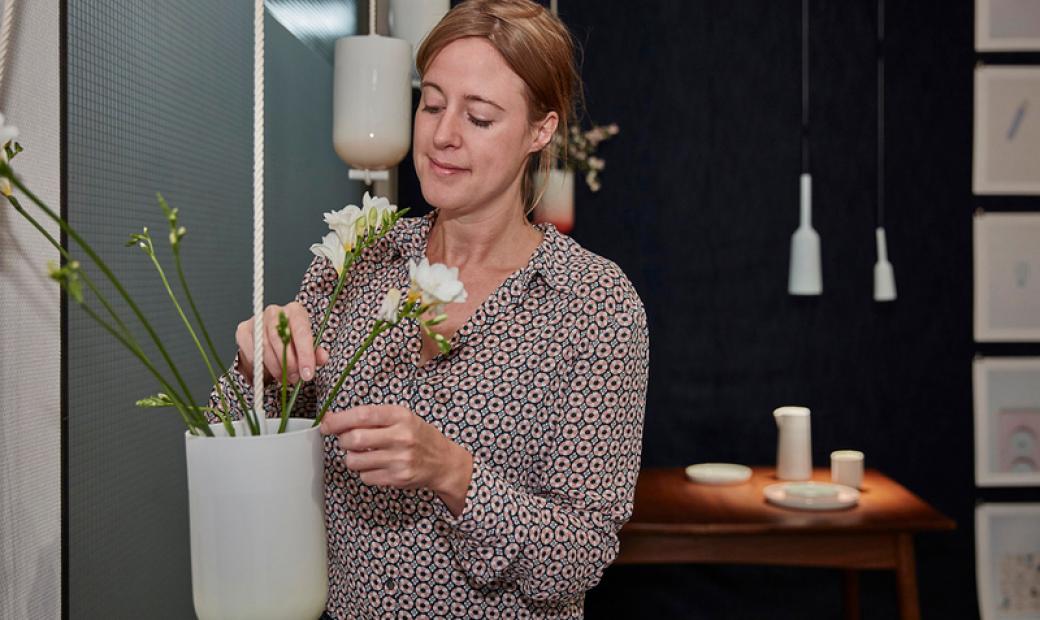Text by Rob van Kaam
To stimulate talented designers, ABN AMRO, BNO and DDW came up with the masterclass Driving Dutch Design (DDD), a 10-month programme assisting young designers in sharpening their entrepreneurial skills. Together with other knowledge partners, the various aspects of entrepreneurship are scrutinised and links are laid between creative and commercial networks. In addition, throughout the period designers are allocated a personal coach by ABN AMRO. Aoife Wullur, Lotte Douwes and Michiel van Abbe are Drivers from the 2013 and 2014 batches. The value of the programme is patently clear from their stories. Not only during, but also following this educational adventure.
Aoife Wullur
In her work Aoife Wullur (30) focuses on the technical elements around us, authenticity and human interaction. She was from the first DDD batch in 2013. It appeared to be an enormously valuable step in breaking with her rusty habits: “Designers hang out a lot together. This has ups and downsides, there are after all a lot more people who aren’t designers. Who you have to approach differently. Our work needs commercial subtitles and I have learned how to do this during DDD.” The first year did not have an exhibition during DDW, but Aoife was given a place in one of the six ABN AMRO Hotspots, where talented designers are offered a stage. “Through the exhibition in the Hotspot, I was scouted by someone from San Francisco and that has been immensely valuable to me. The ball started rolling and it has never stopped.” Following the project, she sought out designers in her surroundings to participate: “It is so important to contact other worlds, I strongly recommend that everyone do this. And through the enthusiasm of the coaches I noticed that they gained a tremendous amount from the experience too.”

Lotte Douwes
Immediately after the first DDD, the second edition was started. Lotte Douwes (34) took up the gauntlet. Through her work, she wants to look at elements in space from a new perspective, making static interiors more dynamic. “After the first couple of masterclasses I had doubts about whether it was going to benefit me, but later on things started to fall into place. The self-reflection about my company was good. Very good.” The Drivers attended a two-day masterclass together. The DDW exhibition was also pitched there by Lotte and co-Driver Suzanne. They saw the value of bundling the Drivers’ expertise and networks, supplemented by those of ABN AMRO, BNO and DDW. This was a great move that benefited the entire group. During DDW, the Drivers held a two-minute pitch. Something that forced Lotte to think seriously about her own work. She received a golden tip from designer Miriam van der Lubbe: be open about your work if it does not yet comply with the complex regulations and rules that apply to your product. A client can decide for him or herself if they are going to manufacture your product on a large scale or not. “This gave me self-confidence and it led to my first major commission and a product that has actually been manufactured. In addition, I now have a gigantic commercial and private network and DDD has made an enormous contribution to my commercial development.”

Michiel van Abbe
For Michiel van Abbe (37), DDD 2014 was a perfectly timed incentive for taking design seriously. As an autodidact designer he combines his two great passions, lighting and photography, to create light objects. There were some sketches and prototypes, but he had done nothing tangible with them. Even so, they continued to bubble. Thanks to the programme and the run-up to DDW the switch flipped. What surprised him the most was the psychological impact of the conversations with the coaches: “I noticed that I actually had very little confidence in my role as a designer. My get-on-with-it attitude had evaporated. It came back to me and that has helped me tremendously.” During the exhibition Michiel sold work to customers in the organisation’s network and he dared to step over his own commercial disbelief. “I knew the tricks, but applying them to yourself is a whole different kettle of fish. It isn’t a bad thing to do this, a commercial attitude does not compromise your work. I see that now.”








